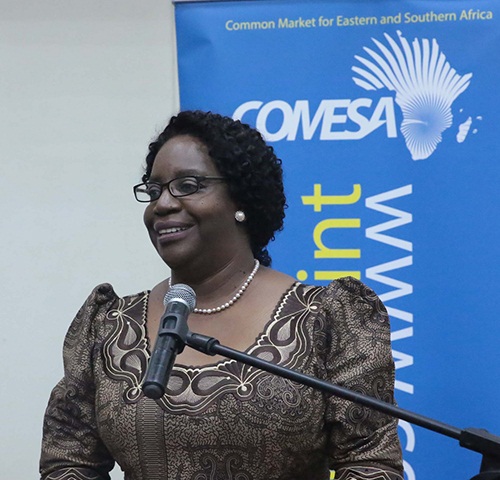TradeMark East Africa (TMEA) and the Common Market for Eastern and Southern Africa (COMESA) have opened a new chapter of cooperation on regional integration programmes following a high-level meeting between the parties in Lusaka.
The TMEA team, led by its Board Chairman Erastus Mwencha, who is also former COMESA Secretary-General and immediate Deputy Chair of the African Union, comprised of the Chief Executive Officer Frank Matsaert among others.
COMESA Secretary General Chileshe Mpundu Kapwepwe led her team flanked by the Assistant Secretary-General (Programmes) Dr Kipyego Cheluget and other senior officials.
Mwencha said TMEA already works closely with East African Community institutions, national governments as well as the private sector and civil society organisations to boost trade.
“The main purpose is to increase trade by unlocking the economic potential of Member States’ increased physical access to markets, enhanced trade environment and improved business competitiveness,” he said.
In his brief to the Secretary-General, Matsaert said: “TMEA has diagnosed the problems in the North and Central corridor and has come up with a program now in its second phase with an initial investment of $2m.”
He added that TMEA’s biggest programs have been in the ports of Dar-e-Salaam and Mombasa focusing on infrastructure upgrade to raise productivity.
Additionally, TMEA has registered success in coordinating and integrating border management systems, automation, cargo tracking, reduction of non-tariff barriers and harmonizing standards on a national and regional level.
Matsaert stated that the company closely works with the private sector particularly the small-scale traders at each country level.
“Our main concern is supporting women traders at borders in formalizing informal trade, increasing income and value addition especially at war conflicts zone borders like DRC and South Sudan,” he said.
In her remarks, COMESA’s Kapwepwe observed that the only way to solve the problem of delays at border crossings is getting the diagnostics and determine where to make improvements.
“Integrating borders in software and hardware has to be addressed. Automation will help in speeding up the process of linkages and integration,” she noted. “Border efficiency, harmonization and simplifying procedures are the key areas where TMEA and COMESA can partner.”
The two parties agreed to explore closer partnership in four key areas of trade facilitation, development of transport corridors and improvements in logistics, industrialization and promotion of small-scale cross-border traders particularly with a focus on women and the youth among the COMESA Member States by addressing the prevailing constraints especially along the borders.
Source: EABNews

